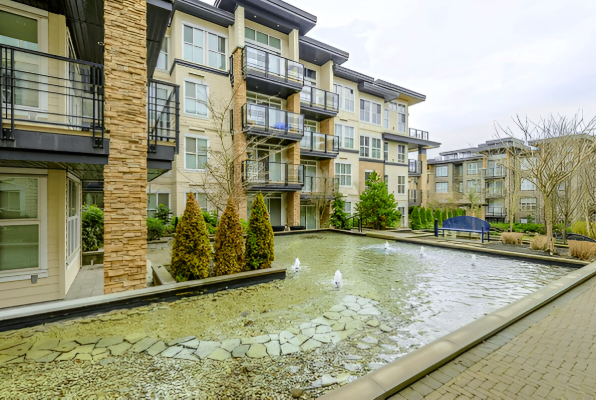As Canada’s cities continue to grow rapidly, the way we plan and develop urban spaces has never been more crucial. From climate change to population growth and social challenges, Canadian cities face a variety of pressures that require innovative solutions. Sustainable city planning is emerging as a vital approach to creating healthier, greener, and more equitable urban environments that can meet the needs of both present and future generations.
In this blog, we’ll explore why sustainable urban planning matters, the key principles guiding these efforts, successful initiatives happening across Canada, and how citizens and businesses can play a role in shaping this future.
Why Sustainable Urban Planning is Essential
Urban areas are home to over 80% of Canada’s population and contribute the majority of economic activity. However, this rapid urbanization can strain infrastructure, increase pollution, and lead to social inequities if not managed carefully.
Sustainable urban planning balances three core pillars:
- Environmental health: Reducing greenhouse gas emissions, preserving natural ecosystems, and managing resources efficiently.
- Social equity: Providing access to affordable housing, green spaces, and public services to all community members.
- Economic vitality: Supporting diverse economic opportunities and resilient local economies.
This integrated approach ensures cities don’t just grow bigger—they grow smarter and better.
For a deeper understanding of housing affordability in Canada and its impact on communities, check out our detailed housing market analysis, which reveals key truths about the challenges faced by residents today.
Key Principles of Sustainable City Planning
Sustainable city planning isn’t just about adding more green spaces or recycling programs—it requires a holistic redesign of how cities function. Here are some fundamental principles shaping Canadian urban development:
1. Green Infrastructure and Nature Integration
Incorporating natural elements into urban areas improves air quality, controls stormwater runoff, and offers recreational spaces. Examples include:
- Urban forests and tree planting: Trees absorb carbon and provide cooling shade during hot summers.
- Green roofs and walls: These reduce building energy consumption and manage rainwater.
- Parks and community gardens: Accessible green spaces promote physical and mental health.
2. Efficient, Sustainable Transportation
Reducing reliance on private vehicles lowers emissions and traffic congestion. Cities are investing in:
- Public transit expansions: Buses, subways, and light rail systems with clean energy sources.
- Active transportation networks: Safe bike lanes, pedestrian walkways, and car-free zones encourage healthier, eco-friendly travel.
- Transit-oriented development: Building homes and businesses near transit hubs to minimize commuting distances.
3. Mixed-Use Development
Designing neighborhoods that combine residential, commercial, and recreational spaces promotes walkability, supports local economies, and reduces travel time. Instead of zoning that separates uses strictly, mixed-use developments foster vibrant, inclusive communities.
4. Affordable and Inclusive Housing
Ensuring access to affordable housing prevents displacement caused by gentrification and supports diverse populations. Policies encouraging affordable housing construction and protecting renters are critical.
If you manage rental properties or are a landlord looking to adopt more sustainable practices, our guide on sustainable property management tips offers practical ways to green your rental portfolio while reducing costs and environmental impact.
5. Smart Technologies for Urban Management
Smart city solutions enable efficient energy use, traffic flow optimization, and data-driven decision-making. Sensors, AI, and connected infrastructure help cities respond dynamically to challenges like pollution spikes or infrastructure failures.
Sustainable Urban Planning in Action: Canadian Examples
Several Canadian cities are already leading with ambitious sustainability plans:
Vancouver: The Greenest City Action Plan
Vancouver has set a goal to become the greenest city in the world by 2050. This plan focuses on:
- Achieving carbon neutrality.
- Increasing green building standards.
- Expanding cycling infrastructure.
- Reducing waste through recycling and composting programs.
Toronto: Transform to Climate Action Plan
Toronto aims to reduce greenhouse gas emissions by 80% by 2050. Key initiatives include:
- Electrifying public transit fleets.
- Encouraging energy-efficient buildings.
- Supporting urban agriculture.
- Enhancing tree canopy coverage.
Montreal: Eco-Districts and Sustainable Neighborhoods
Montreal is developing eco-districts that emphasize:
- Energy-efficient housing.
- Local food systems and farmers’ markets.
- Community green spaces.
- Engagement with residents to promote sustainability.
These examples demonstrate how urban sustainability is becoming embedded in policy and practice across Canada’s major centers.
The Role of Citizens in Building Sustainable Cities
Sustainable cities require active participation from the people who live in them. Here’s how citizens can get involved:
Get Informed and Engage Locally
Understanding municipal planning processes and attending public consultations ensures community voices shape development projects. Participating in local sustainability initiatives, like tree planting days or waste reduction campaigns, also makes a difference.
Adopt Sustainable Lifestyles
Simple actions—such as using public transit, reducing energy consumption at home, composting, and supporting local businesses—contribute to broader sustainability goals.
Advocate for Equity and Inclusion
Encouraging policies that promote affordable housing, accessible transit, and community services helps build equitable urban environments where everyone can thrive.
Business Opportunities in Sustainable Urban Development
Sustainable urban planning is not only good for the environment and society but also presents significant business opportunities, especially for entrepreneurs and innovators in Canada.
- Green construction and retrofit services are in growing demand to meet eco-friendly building standards.
- Smart technology startups can develop innovative solutions for traffic management, energy efficiency, and urban data analytics.
- Sustainable transportation businesses, including e-bike rentals and electric vehicle infrastructure providers, are expanding rapidly.
- Urban agriculture and food tech ventures offer ways to improve local food security and reduce environmental impacts.
For anyone interested in contributing to Canada’s sustainable urban future, this sector offers a promising landscape to launch a new tech startup or grow an existing business.
Challenges and the Path Forward
While progress is encouraging, challenges remain:
- Balancing rapid urban growth with sustainability.
- Securing funding for large-scale infrastructure projects.
- Ensuring equitable participation across all community members.
- Integrating diverse technologies while protecting privacy and data security.
Addressing these challenges requires collaboration between governments, businesses, communities, and researchers.
Final Thoughts: Towards Smarter, Greener Cities (H4)
The future of urban living in Canada lies in sustainable city planning that prioritizes people and the planet. By embracing green infrastructure, inclusive housing, efficient transit, and innovative technologies, Canadian cities can become healthier, more resilient, and more enjoyable places to live.
Whether you’re a citizen, business owner, or policymaker, there’s a role for everyone in shaping this future. Together, Canada can lead the way in creating urban environments that are not only sustainable but also vibrant and equitable for generations to come.
For more insights into housing trends and how sustainable practices can impact your property investments, don’t miss our articles on housing market affordability and green rental management.









